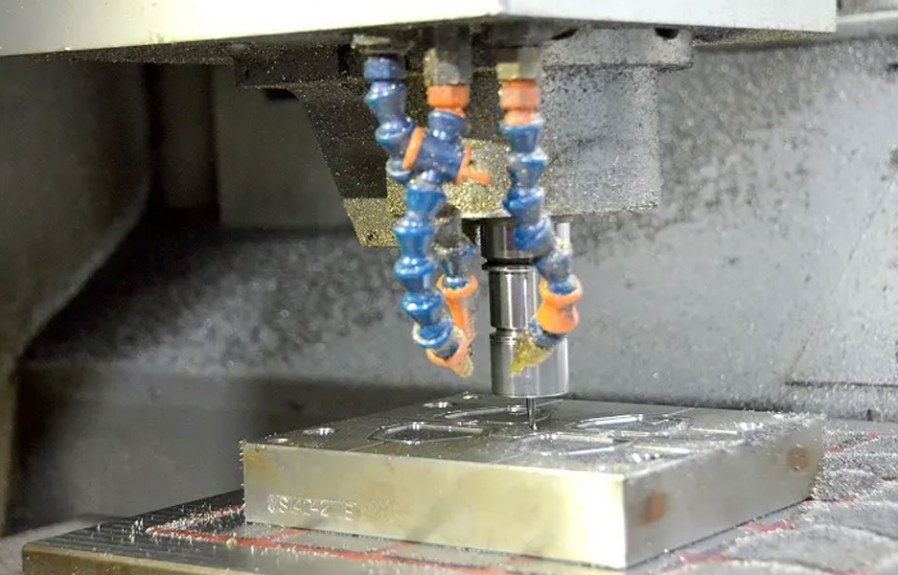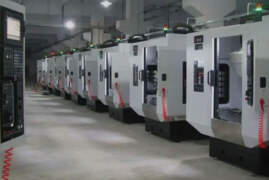Multi-axis machining is a manufacturing process in which tools can be moved in 4 or more ways or directions to create parts that require precision machining, providing innovative and efficient solutions for complex geometric parts. This article will take a closer look at the basic definition and benefits of multi-axis machines.
Multi-axis machines can provide tight tolerance components and offer greater flexibility and cutting edge machining technology as they can machine up to five sides of a part in a single setup. The development and application of multi-axis machine tool technology has revolutionised the metalworking industry, moving from the painstaking practices of centuries past to the cost-effective and time-saving mass production of precision and high-tolerance components.
CNC machining is the ability to produce precision parts and complex shapes based on geometry. Typically, standard CNC lathes have 2 axes and machining centres have 3 axes, making them multi-axis machines. However, complex machine tools have more axes to produce complex components with up to 14 axes. A Computerised Digital Controller (CNC) is where the computer directs the movement of the machine through feedback in microns, so control of material removal will be complex and the finish will be better and more accurate.
Basic definition of a multi-axis machine
Multi-axis machining on a multi-axis machine is a manufacturing process in which the tool moves in at least four different directions. The process helps to create parts from metal and other materials by using laser cutting and water jet cutting. Through this process, complex 3D geometric tools such as turbine blades and detailed cutting tools can be created. Internal cutting options are no longer inaccessible and parts can be made more detailed.
A typical CNC machine uses three axes. Multi-axis machines also support rotation around one or several axes. Workpieces that are linearly translated along the x, y and z axes are typically used on 5-axis machines. Here, the tool spindle has the additional function of rotating in two axes. Multi axis machining have three main components: the physical capabilities of the machine, such as spindle speed, axis direction, operation and torque. Then there is the CNC drive system or the component that makes the machine move. This includes servo motors, ball screws, rapid traverse systems and position monitoring. Finally there is the CNC controller, which controls how the data is stored and transferred within the machine, and how the input data is processed and executed.
There are many improvements to multi-axis machines, but they do come with a cost. From a cost point of view, they make more sense for smaller shops than previous machines, and it often makes more sense to use them to make complex parts. Nevertheless, these machines are invaluable for a number of reasons.
- 1. Multi-axis machines reduce labour, as the workpiece no longer needs to be turned manually.
- 2. They offer the ability to create complex parts with curved holes and other unique features.
- 3. Better surface finish can be achieved by the tangential motion of multi-axis machines.
- 4. The quality of the part is higher because the reduced number of steps and set-up scenarios reduces the chance of error.
- 5. Ideal angles can be achieved with multi-axis machines, helping to extend tool life.
How to achieve maximum efficiency with multi-axis machines
When it comes to multi-axis machining, efficiency can be in terms of size, time and cost elements. Multi-axis machines offer great flexibility and can adapt to changes easily and economically. The extensive use of CNC software for multi-axis machines and the geometric error compensation capabilities of high-end controllers provide a solid basis for efficient machining. The reduction of human interference and the combination of work probes and tool probes still reduces non-productive times in the machining cycle. Multi-axis machines contribute significantly to reducing tool air flow and thus non-cutting times to a large extent.
How to get maximum efficiency from a multi-axis machine, set-up times can be reduced when machining with a multi-axis machine. This reduces the burden rate for multi-axis machine operators as they do not have to re-fix as many parts as possible. With fewer set-ups, manufacturers can concentrate on machining complex systems in one step. This in turn reduces the possibility of operator error and ensures the accuracy of the finished product.
In addition, offline programming, machine simulation during programming and pre-setting of tools are some other means of increasing the utilisation of multi-axis machines.
The article focuses on multi-axis machines. Browse the article to learn about multi-axis machining on multi-axis machines, a manufacturing process in which the tool moves in at least four different directions. The process helps to create parts from metal and other materials through the use of laser cutting and water jet cutting. Through this process, complex 3D geometric tools such as turbine blades and detailed cutting tools can be created. Internal cutting options are no longer inaccessible and parts can be made more detailed.


